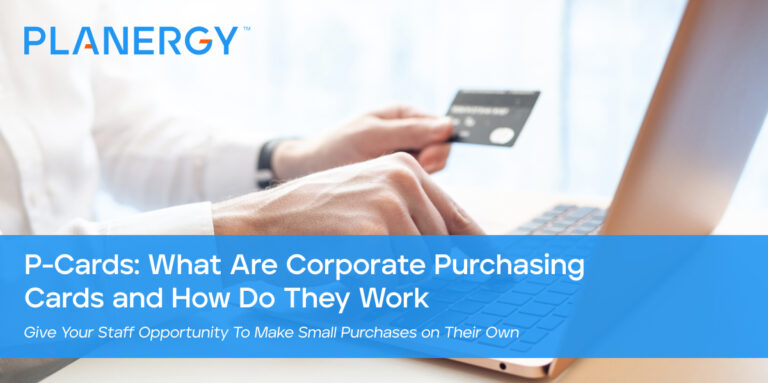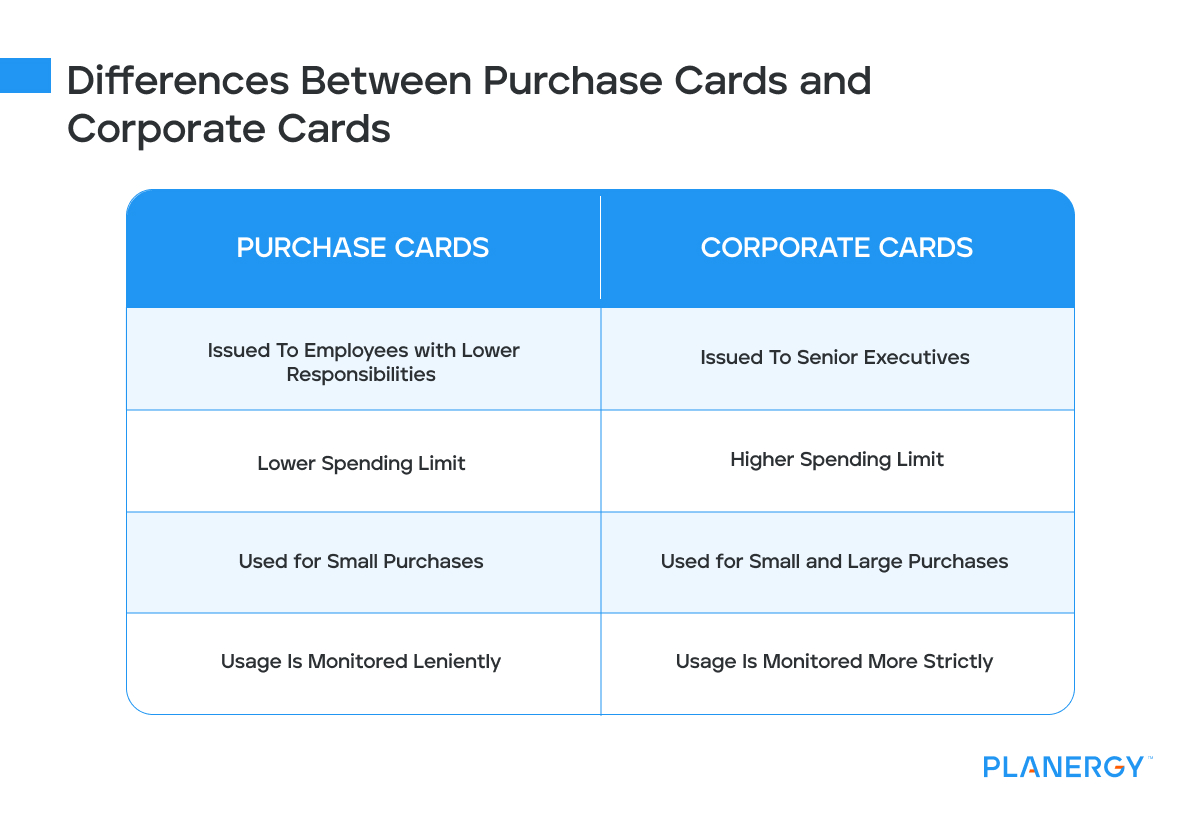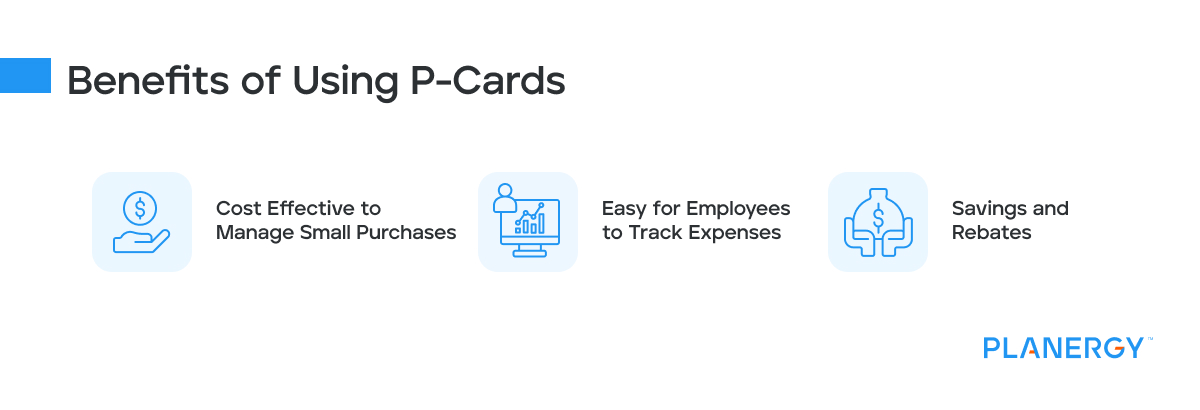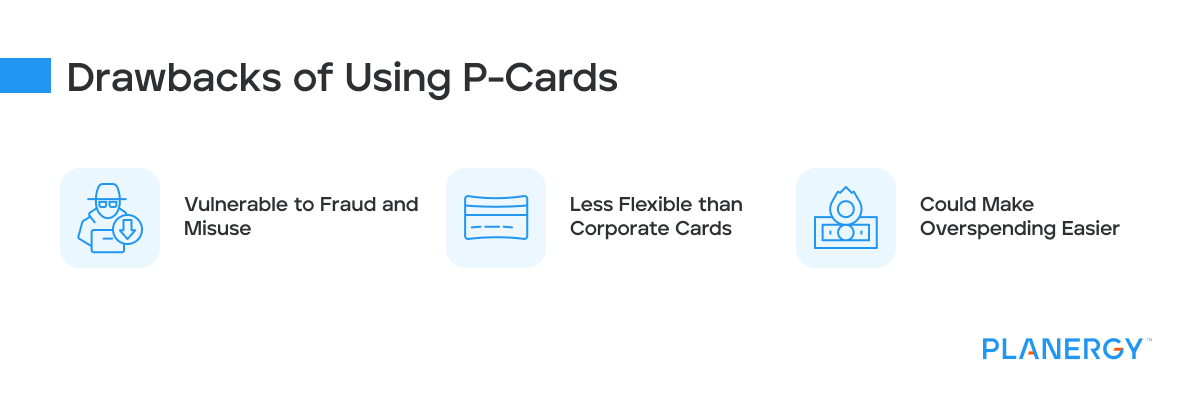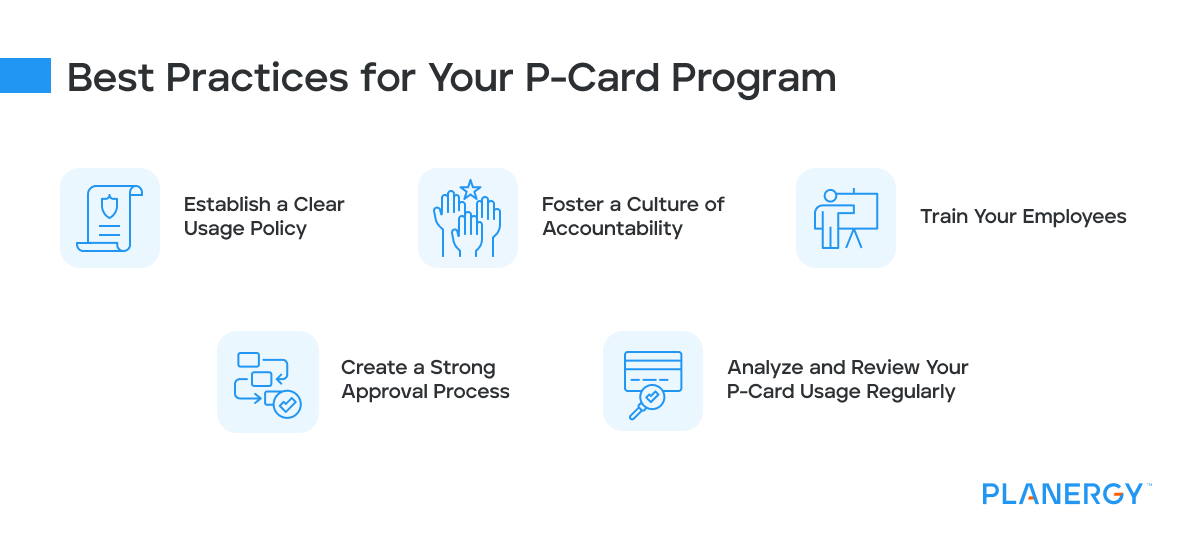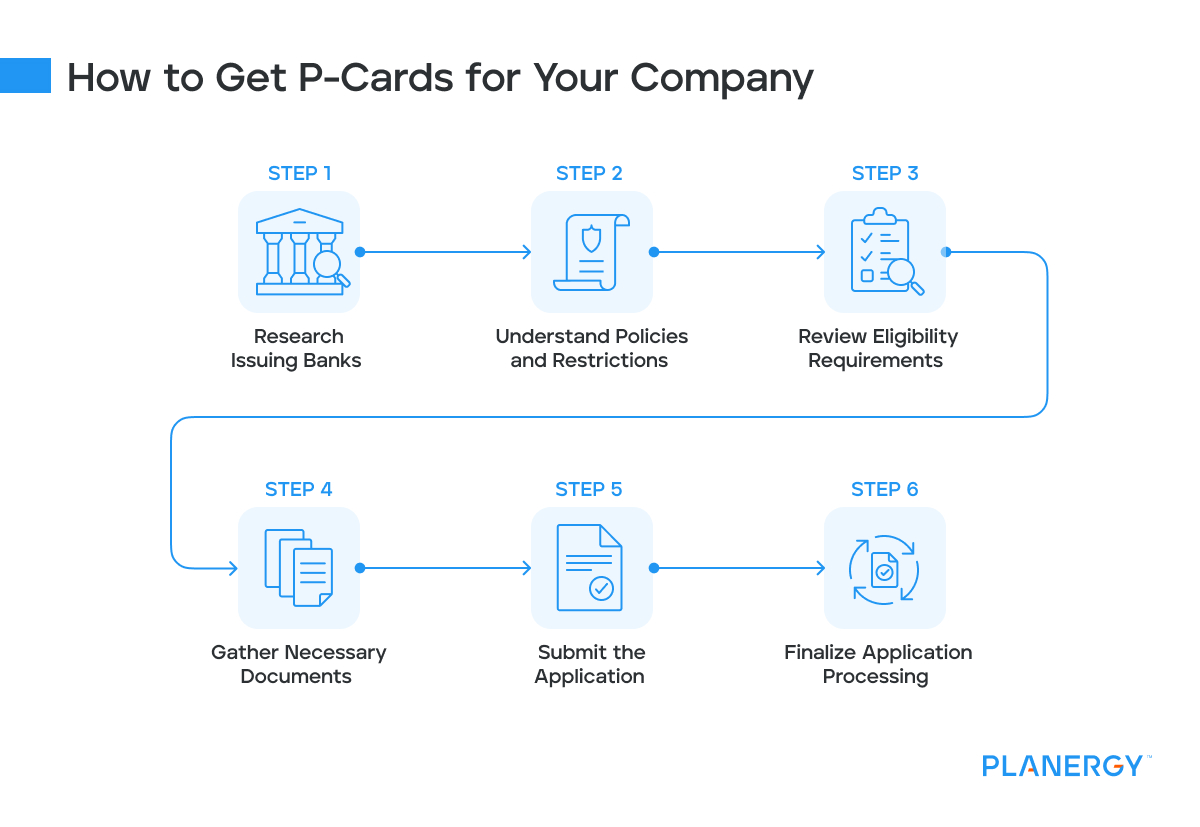Establish a Clear Usage Policy
Having a well-defined P-Card policy is the first step on the road to success. This policy should be a clear guide for all employees who are issued a P-Card.
It should outline the acceptable purchases, spending limits, documentation and receipt requirements, and the consequences of P-Card misuse.
Make sure that this policy is understood by all employees and enforced consistently.
- Define the roles and responsibilities of cardholders, including the authorized use of their card and the procurement process that applies to P-Card usage.
- Set spending limits, frequency, and card usage instructions, including: frequency of P-Card use, spending limits, types of expenses that can be charged, and card usage protocols.
- Outline account restrictions, ordering practices, and daily expenditure limits.
Foster a Culture of Accountability
Incorporating a culture of accountability within your organization can help prevent financial fraud, waste, and abuse.
Having employees willing to report suspicious activity or expenditure immediately is critical for maintaining a healthy P-Card program.
Ensure that employees understand their responsibilities and have procedures in place to report malfeasance – this can be through an anonymous telephone hotline, email, or other types of reporting mechanism.
Train Your Employees
Those with authority to make purchases with a P-Card should undergo P-Card training. While it might be self-explanatory to some, others can make costly mistakes that lead to problems.
Investing time into P-Card training shows a commitment to compliance and helps prevent unintentional spending.
Whether you do in-person or online training, include the basics of P-Card usage, reporting requirements, documentation and receipt requirements, and other relevant information in training sessions.
Also, keep track of those who attend the trainings and who missed them.
Create a Strong Approval Process
Having a strict approval process helps avoid fraudulent or wasteful expenditures. Ensure that at least two people (a requestor and approver) are involved in each P-Card transaction.
The approver should verify that the listed expense is reasonable and adds value to the business before approving the transaction.
Keep a log of approvals and requests, electronically or physically, depending on the size of your company, to maintain a solid audit trail.
Analyze and Review Your P-Card Usage Regularly
Periodically review your P-Card expense usage to determine whether purchasing adds value to your organization. Identify any outliers, such as excessive spending or transactions outside your P-Card policy’s acceptable purchases.
Having an appointed person or team to monitor P-Card spending regularly helps identify any red flags early and avoid any issues.
Implementing best practices for your P-Card program is essential for any business using P–cards.
Not only does it offer a straightforward and effective way to manage your purchasing program, but it also prevents fraud, waste, and abuse.
It’s better to set up a clear policy, establish accountability, enforce training, implement a strong approval process, and regularly analyze your P-Card usage to ensure your card program remains healthy.
A little effort now saves time, money, and many headaches down the road.

